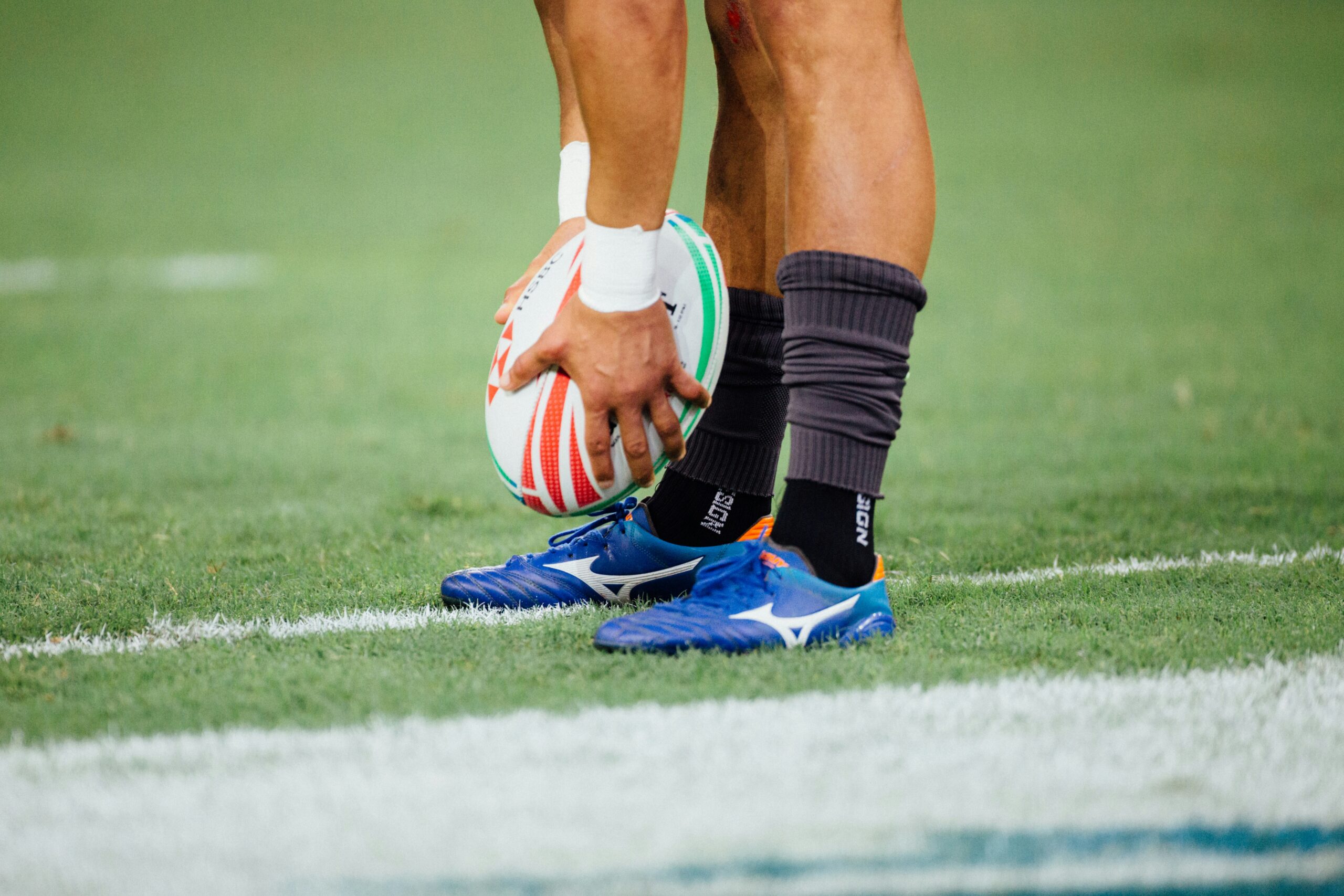
RawOverload may get some remuniration from links followed in this article.
Strength is the cornerstone of success in rugby, a sport demanding a unique blend of power, agility, and endurance. To excel on the field, rugby players must undergo specialized strength training tailored to the demands of the game. In this comprehensive guide, we delve into the best strength training strategies for rugby players to enhance performance, prevent injuries, and dominate the competition.
Understanding the Demands of Rugby:
Before delving into specific training protocols, it’s essential to grasp the physical demands of rugby. Rugby requires a combination of strength, power, speed, agility, endurance, and resilience. Players must be able to exert force explosively during tackles, scrums, and sprints, while also enduring the rigors of a physically demanding 80-minute match.

Are you looking to get into rugby? Click here for a great starter kit
The Best Strength Training Exercises for Rugby Players:
1. Squats: Squats are fundamental for building lower body strength, and essential for explosive acceleration, powerful tackles, and scrummaging. Variations such as back squats, front squats, and goblet squats target different muscle groups and movement patterns, enhancing overall lower body strength and stability.
Check out our squat variation article here
2. Deadlifts: Deadlifts are crucial for developing posterior chain strength, including the hamstrings, glutes, and lower back. This exercise mimics the motion of lifting in rugby, improving tackling power and resilience in contact situations.
3. Bench Press: The bench press is a staple upper body exercise that strengthens the chest, shoulders, and triceps. A strong upper body is essential for winning collisions, fending off opponents, and executing powerful passes.
4. Pull-Ups/Chin-Ups: Pull-ups and chin-ups are effective for developing upper body pulling strength, targeting the back, biceps, and grip. These exercises enhance tackling prowess and contribute to overall functional strength on the field.
5. Cleans: Olympic lifts like cleans are excellent for developing explosive power, essential for sprinting, jumping, and driving through tackles. Cleans improve coordination, speed, and overall athleticism, making them valuable additions to any rugby player’s training regimen.
6. Lunges: Lunges improve unilateral strength and stability, addressing muscular imbalances and enhancing agility on the field. Variations such as reverse lunges, walking lunges, and lateral lunges simulate rugby-specific movement patterns, promoting functional strength and injury prevention.
Periodization and Training Structure:
Periodization is vital for optimizing strength gains while minimizing the risk of overtraining and injuries. Rugby players typically undergo a periodized training program consisting of different phases, including:
1. Off-Season: The off-season focuses on building a solid strength foundation through high-volume, moderate-to-high-intensity training. Emphasis is placed on increasing muscle mass, strength, and power while addressing any weaknesses or imbalances.
2. Pre-Season: Pre-season training shifts towards sport-specific exercises and higher-intensity work to prepare players for the upcoming season. Conditioning drills, agility training, and tactical sessions are integrated with strength training to enhance overall performance and readiness for competition.
3. In-Season: During the season, strength training is adjusted to maintain gains while managing fatigue and injury risk. Sessions are typically shorter and less intense, focusing on maintenance rather than significant strength gains. Recovery and injury prevention strategies become paramount during this phase.
4. Active Recovery: Incorporating active recovery sessions, such as yoga, swimming, or mobility work, helps facilitate recovery, reduce muscle soreness, and prevent overuse injuries throughout the training cycle.
Nutrition and Recovery:
Optimal nutrition and recovery practices are crucial for supporting strength gains and maximizing performance. Rugby players should prioritize:
1. Adequate Protein Intake: Consuming enough protein supports muscle repair and growth, essential for recovery and strength development. Lean sources of protein such as chicken, fish, eggs, and plant-based options should be incorporated into every meal.
2. Hydration: Proper hydration is essential for optimal performance and recovery. Rugby players should aim to consume adequate fluids before, during, and after training sessions and matches to prevent dehydration and maintain peak performance.
3. Quality Sleep: Quality sleep is vital for muscle recovery, hormone regulation, and overall well-being. Rugby players should prioritize consistent sleep schedules and aim for 7-9 hours of uninterrupted sleep per night.
4. Active Recovery: Implementing active recovery strategies such as foam rolling, stretching, and massage therapy can help alleviate muscle soreness, improve flexibility, and enhance overall recovery between training sessions and matches.

Follow the link for a great recovery aid kit
Conclusion:
Strength training is a cornerstone of success for rugby players, providing the foundation for power, speed, and resilience on the field. By incorporating the best strength training exercises, periodization techniques, and recovery strategies, rugby players can optimize their performance, reduce the risk of injuries, and dominate the competition. With dedication, discipline, and a commitment to excellence, rugby players can unleash their full potential and achieve greatness on the rugby pitch.

